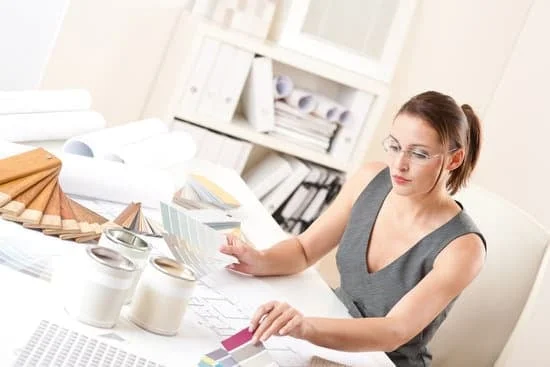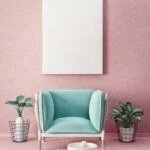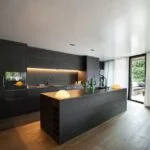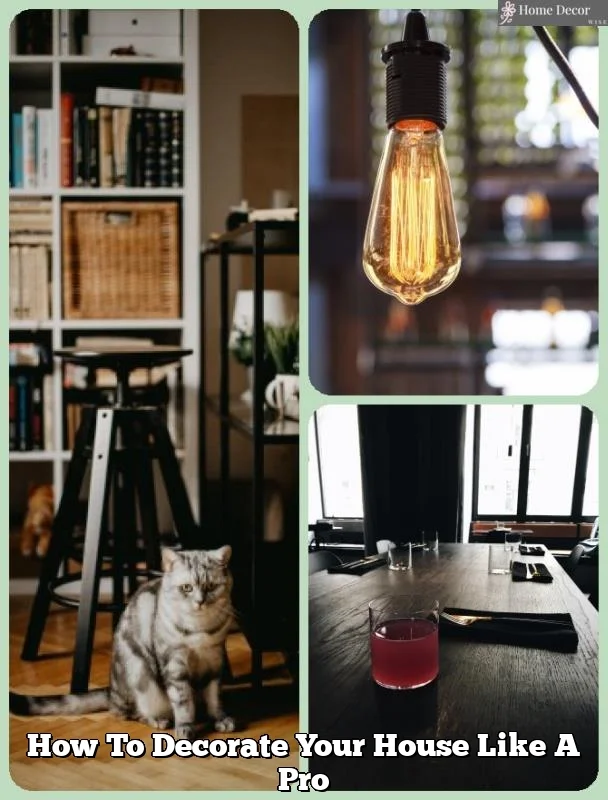Are you struggling with how to decorate an outdated home? Whether you’ve recently purchased a fixer-upper or simply want to refresh your current space, navigating the challenges of decorating an outdated home can be daunting. From identifying key areas in need of a makeover to integrating modern touches without losing the charm of vintage elements, there are several factors to consider when embarking on a home decor project for an older property.
Assessing the current state of your home is crucial in understanding the scope of work that needs to be done. Setting a budget and prioritizing updates will help you allocate funds to high-impact areas and cost-effective solutions. Embracing the charm of vintage elements and choosing timeless design elements will not only enhance the character of your home but also ensure that your decor stands the test of time.
In this article, we’ll explore various strategies for decorating an outdated home, including repurposing existing features, integrating contemporary touches, optimizing space and functionality, and adding stylish finishing touches. By following these tips, you can transform your outdated home into a stylish and functional space that reflects your unique taste and personality.
Assessing the Current State of Your Home
When decorating an outdated home, it’s important to start by assessing the current state of your space. This involves taking a critical look at the existing features and identifying areas that are in need of a makeover. Here are some steps to help you evaluate your home and create a plan for updating its look:
1. Take inventory: Begin by making a list of all the features in your home that you consider outdated or in need of improvement. This could include anything from old-fashioned wallpaper and light fixtures to worn-out furniture and appliances.
2. Seek inspiration: Look for design inspiration from magazines, websites, and social media platforms to gather ideas on how to update your space. Pay attention to current trends as well as timeless design elements that can be incorporated into your home.
3. Consider functionality: Assess the functionality of each room in your home and identify any layout or storage issues that need to be addressed. This will help you prioritize which areas to focus on during the decorating process.
By taking these initial steps, you’ll be better equipped to identify the specific features and areas in your home that are in need of a makeover. This will allow you to create a clear plan for how to decorate an outdated home while maximizing both its aesthetic appeal and functionality.
Setting a Budget and Prioritizing
When it comes to decorating an outdated home, setting a budget and prioritizing where to allocate funds is crucial. It can be overwhelming to tackle a whole house renovation, so breaking it down into manageable projects is key. Assessing the current state of your home and identifying areas in need of a makeover will help you determine which high-impact areas should take priority.
Assessing the Current State of Your Home
Before diving into any updates, take the time to assess the current state of your home. Identify outdated features such as old wallpaper, worn-out carpeting, or dated fixtures. Evaluate the condition of different rooms and make note of any repairs that may be necessary before beginning any cosmetic updates. By taking stock of what needs attention, you can prioritize and allocate funds accordingly.
Setting a Realistic Budget
Once you’ve identified the areas in need of attention, it’s important to set a realistic budget for your updates. Consider hiring professionals for major renovations or repairs, and determine how much you are willing to spend on materials and design elements. Research the cost of labor and materials in your area to get an idea of how much each project will require financially.
Choosing Cost-Effective Updates
When working with a limited budget, prioritize cost-effective updates that will have a big impact. Simple changes like fresh paint, updated light fixtures, or new hardware can drastically improve the look and feel of a space without breaking the bank. Look for affordable alternatives when updating features like cabinets or countertops to achieve a refreshed look without overspending.
By being strategic with your budget allocation, you can effectively transform an outdated home without financial strain. Learning how to decorate an outdated home on a budget is all about making informed decisions about where to invest money for maximum impact while sticking within your financial means.
Embracing the Charm of Vintage Elements
When it comes to decorating an outdated home, one of the key factors to consider is how to embrace the charm of vintage elements. By incorporating and repurposing existing features, homeowners can enhance the character of their homes while still giving it a modern touch. Here are some strategies on how to achieve this:
Preserving Original Architectural Features
One way to embrace the charm of vintage elements is by preserving the original architectural features of the home. This could include maintaining or restoring features such as crown moldings, wainscoting, or built-in cabinetry. By highlighting these elements, it adds a sense of history and authenticity to the space.
Repurposing Vintage Furniture and Decor
Another strategy is to repurpose vintage furniture and decor items within the home. Instead of getting rid of older pieces, consider updating them with a fresh coat of paint or reupholstering them with modern fabrics. These pieces can add a unique and eclectic touch to the overall decor while still paying homage to the home’s original style.
Adding Vintage-Inspired Accents
Incorporating vintage-inspired accents such as antique mirrors, light fixtures, or artwork can also help enhance the character of an outdated home. These accents can serve as focal points in a room and contribute to creating a cohesive design aesthetic that seamlessly blends old and new elements.
By embracing vintage elements in these ways, homeowners can breathe new life into their outdated homes while retaining its inherent charm and character. It’s all about striking a balance between preserving what makes the home unique and integrating modern updates for a refreshed look.
Choosing Timeless Design Elements
When it comes to decorating an outdated home, one of the key elements to consider is choosing timeless design elements that will stand the test of time. This means selecting classic colors, patterns, and materials that can help bring a sense of cohesion and longevity to your home’s interior design.
One approach to selecting timeless design elements is to opt for neutral color palettes. Neutral colors such as whites, beiges, grays, and creams provide a versatile backdrop that can easily adapt to changing trends and personal preferences. These colors also create a sense of spaciousness and airiness, making them perfect for smaller or outdated spaces that need a breath of fresh air.
In addition to neutral colors, classic patterns such as stripes, plaids, and florals can add visual interest without being too overwhelming. When incorporating patterns into your home decor, consider using them in moderation on items such as area rugs, throw pillows, or curtains. This allows you to experiment with different patterns without committing to a permanent or overwhelming design scheme.
When it comes to materials, natural and durable options are always a safe choice. Timeless materials like hardwood floors, stone countertops, and ceramic tiles not only add an enduring elegance to your home but also have the durability to withstand the test of time. By choosing quality materials that are both aesthetically pleasing and long-lasting, you can create a timeless foundation for your home decor that can be easily updated with accessories and accents as trends evolve.
| Timeless Design Elements | Advantages |
|---|---|
| Neutral color palettes | Versatile backdrop; creates a sense of spaciousness |
| Classic patterns | Adds visual interest without being overwhelming; can be used in moderation |
| Natural and durable materials | Adds enduring elegance; has the durability to withstand the test of time |
Utilizing Modern Trends and Technology
Integrating modern trends and technology into an outdated home can be a delicate balance between keeping the charm of the original design and bringing it up to date. One effective way to achieve this is by incorporating smart home technology such as smart thermostats, lighting systems, and security features. These additions not only bring the home into the 21st century but also improve its functionality and efficiency.
Another way to update an outdated home with modern touches is by focusing on the kitchen and bathroom areas. These spaces can benefit greatly from modern appliances, fixtures, and finishes. For example, replacing old countertops with sleek quartz or granite can instantly transform the look of a kitchen, while installing a rain shower head or a modern vanity can give new life to a dated bathroom.
It’s important to strike a balance between maintaining the original character of the home while introducing contemporary elements. This can be achieved through thoughtful planning and design choices that complement rather than clash with existing features. When done properly, blending vintage charm with modern updates can create a unique and appealing aesthetic that honors the history of the home while making it relevant for today’s living standards.
| Modern Updates for Outdated Home | Benefit |
|---|---|
| Smart home technology | Improves functionality and efficiency |
| Kitchen and bathroom upgrades | Instantly transforms spaces |
| Balancing vintage charm with modern updates | Creates a unique and appealing aesthetic |
Maximizing Space and Functionality
When it comes to decorating an outdated home, maximizing space and functionality is essential for creating a modern and comfortable living environment. Reconfiguring the layout and implementing smart storage solutions can make a significant difference in the usability of your home. Here are some key strategies on how to optimize the use of space and improve functionality in an outdated home:
1. Assess the current layout: Take a critical look at the existing layout of your home and identify any inefficient use of space or areas that can be reconfigured to better suit your needs. This may involve removing unnecessary walls to create open-concept living areas, repurposing underutilized spaces such as alcoves or corners, or reorganizing furniture placement to improve traffic flow.
2. Invest in multi-functional furniture: One way to maximize space is by choosing furniture pieces that serve multiple purposes. For example, consider a sofa bed for a guest room that can also function as a seating area, or a coffee table with built-in storage compartments. This not only saves space but also adds versatility to your living areas.
3. Implement creative storage solutions: Lack of storage is a common issue in outdated homes, but there are many creative ways to address this challenge. Utilize vertical space with floor-to-ceiling shelving or install built-in cabinets and drawers to make use of underused nooks and crannies.
By reconfiguring the layout and incorporating innovative storage solutions, you can optimize the use of space in an outdated home while improving its overall functionality. These strategies allow you to make the most of what you have, creating a more comfortable and efficient living environment without compromising on style or aesthetics.
Bringing It All Together
In conclusion, decorating an outdated home may seem like a daunting task, but with the right approach and strategies, it can be a rewarding and fulfilling experience. By following the steps outlined in this guide, homeowners can transform their outdated spaces into stylish and updated havens that seamlessly blend vintage charm with modern functionality.
From assessing the current state of the home to setting a budget and prioritizing updates, embracing vintage elements, choosing timeless design elements, integrating modern trends and technology, maximizing space and functionality, to finally styling and adding finishing touches – every step plays a crucial role in revamping an outdated home.
It’s important to remember that updating an outdated home doesn’t necessarily mean completely erasing its history or character. Instead, it’s about striking a balance between preserving its unique features while incorporating contemporary elements to bring it up to date. Homeowners can achieve this by repurposing existing vintage elements, choosing classic colors and materials that stand the test of time, and utilizing modern technology to enhance the functionality of the space without compromising its original charm.
Ultimately, bringing an outdated home back to life requires creativity, patience, and a clear vision for how you want your space to look and feel. By following these guidelines on how to decorate an outdated home, homeowners can breathe new life into their spaces and create a cohesive, updated aesthetic that reflects their personal style while honoring the history of their home.
With the right approach, even the most outdated home can be transformed into a stunning showcase of timeless elegance and modern functionality.
Frequently Asked Questions
How Can I Make My Outdated House Look Better?
There are several ways to make an outdated house look better. You can start by updating the paint, replacing old fixtures and hardware, adding modern and stylish furniture, and incorporating trendy accessories or décor. Renovating outdated spaces like the kitchen or bathroom can also make a big difference in improving the overall look of the house.
What Makes House Look Outdated?
A house can look outdated for several reasons. This includes old-fashioned or worn-out furniture, out-of-date color schemes and patterns, dim lighting, and obsolete fixtures or hardware. Lack of modern amenities or technological advancements can also contribute to making a home look outdated.
How to Decorate an Old Fashioned House?
Decorating an old-fashioned house requires a balance between preserving its original charm while integrating modern elements. This can be achieved by incorporating vintage-inspired décor pieces, using warm and rich color palettes, adding traditional patterns and textures, and mixing antique furniture with contemporary pieces.
Updating lighting fixtures and adding artwork or accent pieces can also help in giving an old-fashioned house a fresh look.

I’m thrilled to be your companion on this exciting journey through the world of home decor and design. With a passion for turning houses into homes and a keen eye for the finer details, I’m here to help you transform your living spaces into beautiful, functional, and meaningful havens.





